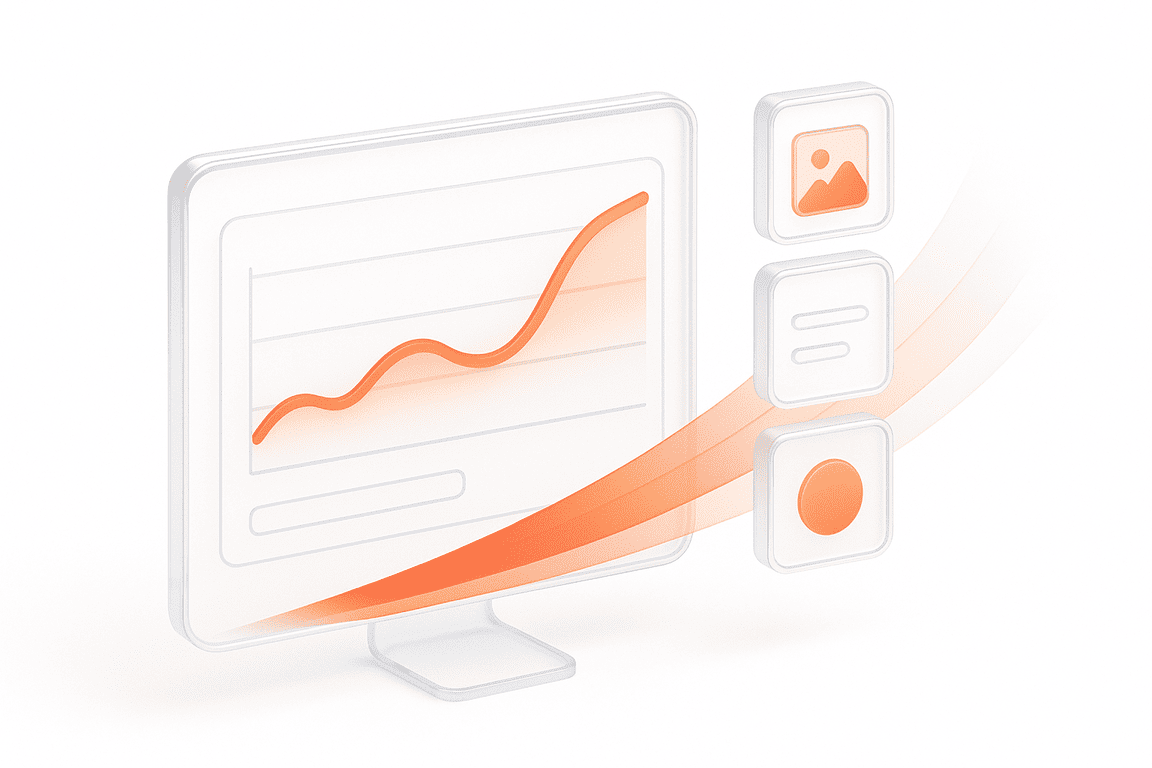Choosing between gRPC and REST can feel confusing, especially if you’re trying to figure out the best way for your applications to communicate. This article breaks down the grpc vs rest comparison clearly, without jargon or confusion. You’ll learn exactly what each protocol is, the advantages and disadvantages of each, and understand why gRPC is faster than REST in some situations. By the end, you’ll have a clear idea about when to use gRPC over REST, along with practical insights and common grpc use cases to help you make the right choice for your project.
REST Overview
REST is short for Representational State Transfer, a popular architectural style used for creating web services. Developed by Roy Fielding in 2000, REST focuses on simplicity, scalability, and flexibility. REST APIs communicate through standard HTTP requests like GET, POST, PUT, and DELETE, allowing data to be easily retrieved, created, updated, and deleted.
The main purpose of REST is to enable clear, structured interactions between client and server by using resources identified by URLs. Each request is independent and stateless, meaning the server doesn’t need to remember any previous interactions, making REST APIs simpler and more scalable.
Because of its simplicity and broad compatibility, REST has become a widely-used standard across web development, making the choice between REST vs gRPC an important consideration for developers.
Advantages and Disadvantages Of REST
REST has been the go-to choice for web APIs for years, thanks to its many strengths. However, it also has some limitations worth noting, especially in a direct grpc vs rest comparison.
Advantages of REST
✔️ Browser Support
REST APIs use standard HTTP methods, meaning they naturally work with all browsers without additional configuration. This broad compatibility simplifies client-side implementation.
✔️ Ease of Use
REST APIs follow simple URL-based structures, making them straightforward to design, use, and understand, especially for newcomers.
✔️ Flexibility
REST supports a variety of data formats such as JSON, XML, or even plain text, allowing it to fit many different use cases and making data easy to interpret.
✔️ Robust Ecosystem
Due to its popularity, REST APIs have a mature ecosystem with numerous tools, libraries, and documentation available, simplifying development and debugging. It also includes a variety of API Load Testing Tools, which make it easier to test REST APIs for performance and stability.
Disadvantages of REST
✘ Reliance on HTTP/1.1
REST typically uses HTTP/1.1, which allows only sequential data transmission, limiting speed and efficiency compared to protocols leveraging newer standards.
✘ Requires Extra Tools
Complex tasks, such as defining contracts or generating code, aren’t built into REST, often requiring external tools or manual work.
✘ Slower and Less Efficient
REST tends to be slower due to text-based message formats like JSON or XML and the overhead involved in parsing these messages, particularly compared to binary protocols like gRPC.
gRPC Overview
gRPC is an open-source Remote Procedure Call (RPC) framework developed by Google in 2015. It enables efficient and high-performance communication between services, particularly valuable in microservice architectures.
The main purpose of gRPC is to simplify service-to-service communication by using HTTP/2, Protocol Buffers, and built-in code generation. This allows for structured data transmission, making gRPC ideal for high-performance scenarios. Developers often consider grpc vs rest api protocols when evaluating efficient solutions for inter-service communication.
Advantages and Disadvantages Of gRPC
When deciding why use gRPC over REST, it’s helpful to understand its clear strengths, as well as a few potential drawbacks.
Advantages of gRPC
✔️ Speed
gRPC utilizes HTTP/2 and Protocol Buffers, allowing fast binary data transmission, making it significantly quicker than REST APIs.
✔️ Code Generation
Protocol Buffers enable automatic code generation, greatly reducing development effort, ensuring consistency, and minimizing errors.
✔️ HTTP/2 Support
By using HTTP/2, gRPC supports multiplexing, header compression, and streaming capabilities, contributing significantly to its speed and efficiency. To fully leverage these advantages, using a reliable gRPC load testing tool is essential to ensure your services scale effectively under real-world conditions.
✔️ Cancellation and Timeouts
gRPC provides built-in mechanisms for cancelling operations and setting deadlines, which helps to efficiently manage resources and improve reliability.
Disadvantages of gRPC
✘ Novelty and Ecosystem
gRPC is relatively new, meaning fewer resources and tools are available compared to REST. This can sometimes slow down the initial setup or troubleshooting process.
✘ Steep Learning Curve
Learning and implementing gRPC can be more complex due to the requirement to understand Protocol Buffers, HTTP/2 specifics, and code generation tools.
✘ Lack of Browser Support
Unlike REST, gRPC does not naturally support browser-based interactions, making it less suitable for web client applications without additional adaptations or middleware solutions (grpc to rest translation layers might sometimes be needed).
Key Similarities: gRPC vs REST
Despite their differences, gRPC and REST have several fundamental similarities, making them both viable choices for web service communication depending on your project requirements.
Client/Server Architecture
Both REST and gRPC follow a client/server model. Clients request resources or services, and servers provide responses. This clear separation simplifies maintenance and improves scalability.
Use of HTTP
REST primarily uses HTTP/1.1, while gRPC leverages HTTP/2. Despite the different versions, both rely heavily on the underlying HTTP protocol, enabling structured communication across networks.
Support for Many Programming Languages
Both REST and gRPC offer compatibility with a wide range of programming languages. REST APIs can be easily implemented in virtually any language, while gRPC supports multiple languages such as Java, Python, Go, Ruby, and more, thanks to its built-in code generation.
Statelessness
Both architectures follow a stateless communication approach, meaning each request from a client to the server must contain all the information needed to understand and process that request. Statelessness improves scalability and simplifies load balancing.
Platform Independence
Both REST and gRPC are platform-agnostic. This allows clients and servers to be developed on entirely different platforms or operating systems without compatibility issues.
Differences Between REST and gRPC
When conducting a detailed grpc vs rest api comparison, the distinctions between these two methods become clearer. Here’s a comprehensive breakdown of key differences:
Data Format
Communication Pattern
Design Pattern
Coupling
Code Generation
Implementation
When to Use gRPC vs. REST API
Selecting between REST API vs gRPC isn’t simply a matter of preference — it’s a decision shaped by your project’s specific requirements, constraints, and objectives. Each has scenarios where it shines and scenarios where it might create unnecessary complexity. Below, we’ll explore detailed, practical situations to clarify precisely when to use gRPC or stick with REST.
When to Use gRPC
1. High-Performance Applications
If performance is critical — when wereal-time analytics, high-frequency trading systems, gaming backends, or streaming media services — gRPC offers substantial speed advantages. It leverages HTTP/2 and binary serialization through Protocol Buffers, making it significantly faster and more efficient than REST APIs, especially for latency-sensitive use cases.
2. Complex Communication Patterns
REST typically follows a request-response model. In contrast, gRPC supports advanced communication methods like:
3. Internal Microservices
For microservice architectures within a controlled environment, gRPC’s stricter, schema-based contracts and built-in code generation simplify coordination between development teams. It clearly defines service interfaces, ensures data consistency, and reduces integration friction across teams using different languages. Additionally, performance testing of microservices becomes simpler with gRPC, thanks to its strict service definitions and efficient communication patterns.
4. Efficient Bandwidth Usage
Because of its binary data format (Protocol Buffers), gRPC minimizes the payload size. This efficiency is beneficial when network bandwidth is constrained or expensive — ideal for IoT, mobile applications, or edge computing scenarios.
5. Easier Cross-platform Integration
If your system involves multiple platforms and programming languages, gRPC’s automatic code generation greatly simplifies development, as it generates compatible client and server stubs across many languages from a single definition.
When to Use REST
Public APIs and Browser-Based Applications
If your goal is building widely accessible APIs that third parties or end-users will interact with directly, REST APIs are typically easier to adopt. They naturally integrate with web browsers and standard HTTP clients, eliminating the need for additional middleware or complex tooling.
Simplicity and Speed of Development
REST’s simple, intuitive structure means developers can get up and running quickly, leveraging common HTTP methods and widely-understood patterns. This makes REST particularly suitable for rapid prototyping or projects requiring quick iterations.
Flexibility in Data Formats
REST allows various data formats (JSON, XML, plain text), providing flexibility. It is beneficial when dealing with legacy systems or heterogeneous environments, where strict data structures and binary serialization might be impractical.
Broad Compatibility and Ecosystem
As we mentioned previously, REST APIs benefit from extensive industry-wide support and maturity. There’s a wealth of documentation, tools, libraries, and community support, making troubleshooting, development, and integration straightforward, particularly beneficial for open, externally-facing platforms.
Practical Considerations and Trade-offs
When choosing between REST API vs gRPC, consider these nuanced trade-offs as well:
Ultimately, choosing when to use gRPC or REST comes down to aligning each protocol’s strengths and weaknesses with your project’s practical realities.
Conclusion
When comparing REST API vs gRPC, both protocols have clear strengths depending on your specific project requirements. Understanding why use gRPC typically boils down to its superior performance, streamlined communication patterns, and efficiency in data serialization, especially within internal and performance-sensitive environments. REST remains ideal for broader compatibility, ease of implementation, and web-facing APIs. If you’d like to go beyond these two protocols, check out our post on gRPC alternatives for a deeper look at other options. Carefully assessing your priorities — performance, simplicity, ecosystem maturity, browser compatibility — will guide your decision effectively.
Related insights in blog articles
UI Load Testing: Full Guide

When an application starts to slow down, users notice it immediately. Pages hesitate to load, buttons lag, animations freeze for a split second, and that’s often enough to make someone close the tab. These issues rarely come from the backend alone. In most cases, the real strain appears in the browser, where scripts, styles, and […]
Internet of Things Testing: Benefits, Best Practices, & Tools for Reliable Connected Systems

IoT is an ecosystem of devices connected through networks and relying on cloud or app services for endless communication, data exchange, and smart automation. For this ecosystem to work seamlessly 24/7, it heavily depends on IoT testing. Apart from impeccable performance, the latter guarantees the reliability, protection, and integrity of diverse devices, networks, apps, and […]
Swagger API Testing: What It Is, How It Works, and Best Practices for QA Teams

Testing APIs without proper documentation can feel like walking through fog — every endpoint is a guess, every parameter a risk. But not with Swagger UI API testing. Swagger turns static API definitions into a live, interactive interface where developers and QA teams can validate endpoints, check request/response schemas, and explore the system in real […]
BlazeMeter vs. JMeter: Full Comparison

Ever wondered whether you should stick with Apache JMeter or move your tests to BlazeMeter? Both tools are powerhouses in performance and load testing, but they serve different needs. JMeter is an open-source desktop tool under the Apache 2.0 license; ideal for local or distributed testing across HTTP, APIs, JDBC, and more. BlazeMeter, on the […]
Be the first one to know
We’ll send you a monthly e-mail with all the useful insights that we will have found and analyzed
People love to read
Explore the most popular articles we’ve written so far
- Top 10 Load Testing Tools for 2025: The Deep Dive Sep 9, 2025
- Cloud-based Testing: Key Benefits, Features & Types Dec 5, 2024
- Benefits of Performance Testing for Businesses Sep 4, 2024
- Android vs iOS App Performance Testing: What’s the Difference? Dec 9, 2022
- How to Save Money on Performance Testing? Dec 5, 2022

